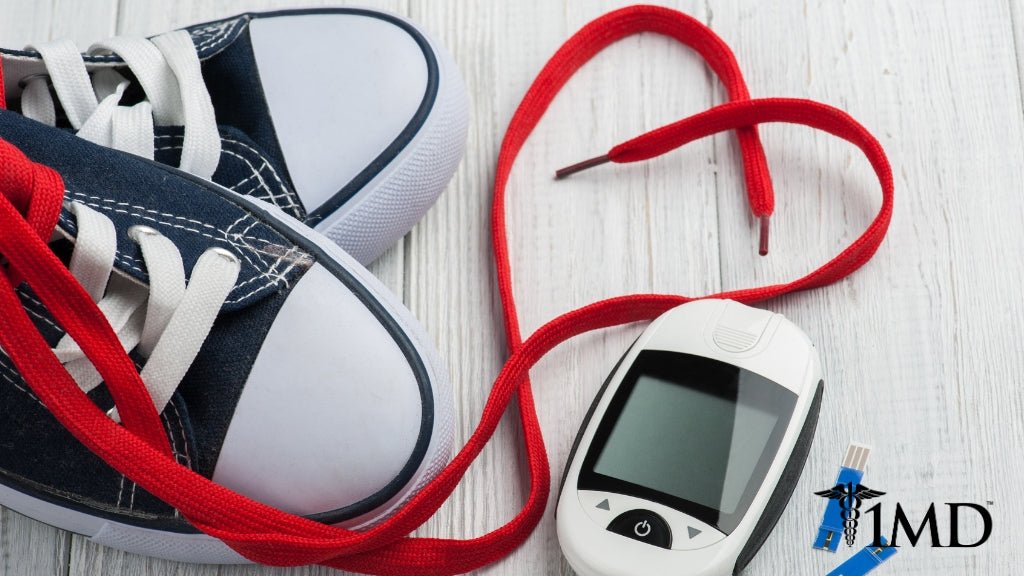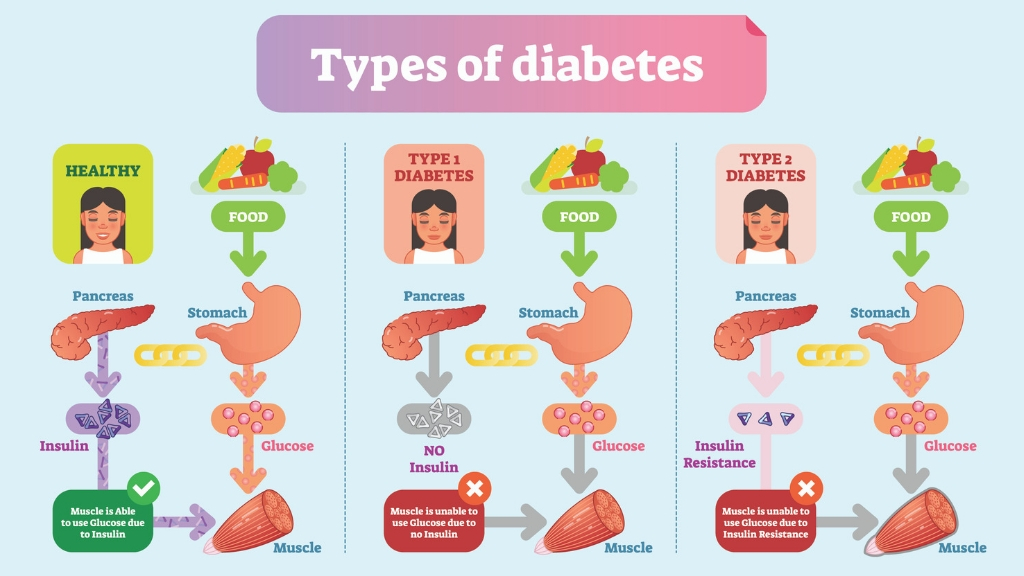Understanding the Different Types of Diabetes + Prevention Tips
7 minute read
Diabetes is often talked about, but unless you have it or have a close family member who has it, it can be difficult to understand. Even when you have diabetes, there can be some confusion.
In general, diabetes is a disease that occurs when your blood glucose, or blood sugar, is not being dispersed as it should be. Your blood glucose is the main source of your body’s energy and comes from the foods you eat.
When you have diabetes, your body is not making enough insulin, and the glucose stays in your blood. Not only do you suffer from not getting that energy, having too much glucose in your blood causes additional health problems.
Different Types of Diabetes
Before we look into how you get type 2 diabetes, it’s important to understand the different types of diabetes by learning a little about each one.
Type 1 Diabetes
With type 1 diabetes, your body doesn’t make insulin. In fact, your body’s immune system attacks and destroys the cells that are responsible for making insulin. This type of diabetes is typically discovered when the individual is young, but it can appear at any age. People who have type 1 diabetes need to take insulin every day to stay alive.

Type 2 Diabetes
People with type 2 diabetes are definitely not alone, as this is the most common type of diabetes. For people with this form of the disease, their body produces insulin, but it’s not enough to keep up with the glucose in the body. Typically, there is an initial overreaction with too much insulin produced, and then there is an inability of the pancreas to make enough.
Type 2 diabetes is usually diagnosed in people who are middle-aged or older people.
Gestational Diabetes
This type of diabetes can affect women when they are pregnant. In most cases, it will resolve after the baby is born, but it does leave you more susceptible to developing type 2 diabetes later in life.
How Do You Get Type 2 Diabetes?
Type 2 diabetes is very common, with 9.4 percent of the population (or 30.3 million people) in the United States being afflicted. In people over the age of 65, diabetes affects one in four people, about 90-95 percent of those are people with type 2 diabetes.

Your odds of developing type 2 diabetes increase with age. Your odds also increase if you have a family history of diabetes, and/or you’re overweight. The following are other risk factors for type 2 diabetes:
♦ High blood pressure
♦ Low HDL (good) cholesterol levels
♦ High triglyceride levels
♦ History of gestational diabetes
♦ Mainly sedentary lifestyle
♦ Have a history of heart disease or stroke
♦ Are African American, Alaskan Native, American Indian, Asian American, Hispanic/Latino, Native Hawaiian, or Pacific Islander
Having some of the risk factors for type 2 diabetes can definitely increase your odds of developing this disease, but the risk factors are not the end all, be all of the diseases. Sometimes very fit people, who lead very healthy lifestyles, end up developing type 2 diabetes.
This is why it’s important to have your blood tested by your doctor as part of your routine health checkup.
Type 2 diabetes develops when the body becomes resistant to insulin, or when the pancreas isn’t able to produce enough. The exact cause for type 2 diabetes is not certain at this time, but thankfully the research is ongoing.
How to Prevent Type 2 Diabetes
Healthy lifestyle choices can help prevent type 2 diabetes. This is even true for people who have a prediabetes diagnosis. For some people diagnosed with type 2 diabetes, a lifestyle change, and better choices can slow the progression and help maintain your health without medicinal intervention.

These changes include:
♦ Food choices: Foods lower in fat and calories, and high in fiber are key. It’s also important to minimize sugar and carbohydrate intake while boosting your consumption of fruits, vegetables, and whole grains. Your doctor can lead you to many good resources for type 2 diabetes diets.
♦ Support liver health: LiverMD supplements use an exclusive formula with patented ingredients to promote liver health and aid in detoxification. Your liver is key to all-over health, so it’s important to note that a malfunctioning liver can lead to the development of type 2 diabetes. Supporting liver health through supplements can help stave off type 2 diabetes by promoting optimal performance.
♦ Be more active: A target of 30-60 minutes of moderate physical activity a day goes a long way to helping your body perform optimally and warding off diabetes. If you don’t see yourself going for a daily run, that’s okay—spread the activity out over the day, take a couple of little walks or go for a bike ride.
♦ Move: In addition to adding a fitness routine to your life, try to avoid sitting for long periods of time without moving. Make a note to get up every half hour just to stretch or take a few steps.
♦ Lose weight: If you’re overweight, losing 5 to 10 percent of your body weight can dramatically reduce your odds of getting type 2 diabetes.
| Related: 7 Essential Liver Health Tips + Habits You Should Start Today |
The Bottom Line
Diabetes is a disease where the body doesn’t process sugars properly, leading to long-term and serious consequences. There are several different types of diabetes, but type 2 is by far the most common, especially in an aging population.

The good news is that some of the risk factors for developing type 2 diabetes can be controlled, and even people who have been diagnosed with prediabetes can benefit from some lifestyle changes that will prevent or slow the progression of this disease.
A big part of your dietary changes will focus on supporting liver health. In addition to eating and drinking more responsibly, adding a liver supplement like LiverMD can help you give your liver the support it needs to function better.
Finally, fitness and weight come into play. If you’re overweight, aim for a reduction of 5 to 10 percent, at the very least. Your best bet is to try to get into a healthy weight range for your height, gender, and age. Moving is going to be an important part of losing weight but it should also be a big part of your new lifestyle, with longer periods of sitting avoided whenever possible.
All of these tips together may help you prevent type 2 diabetes, or slow the progression of this disease, making it more manageable and keeping you healthier.












